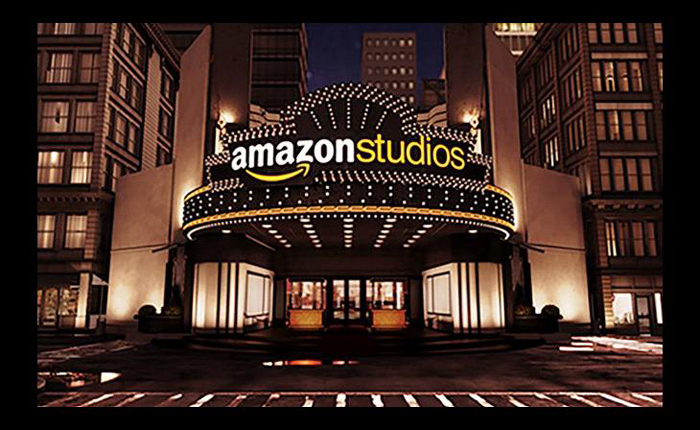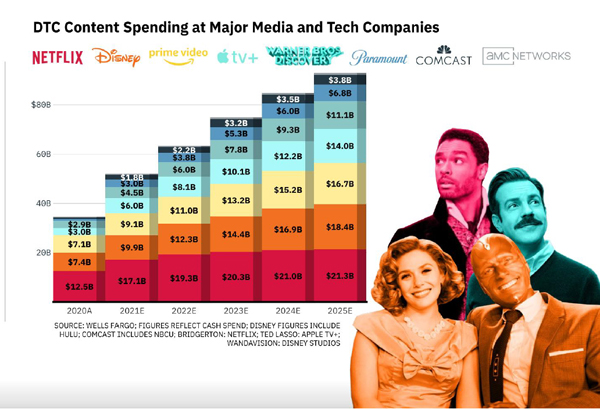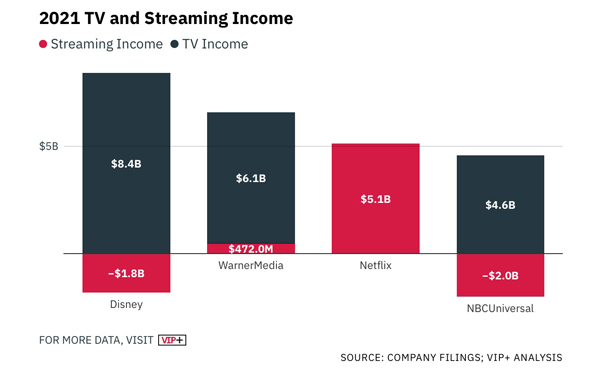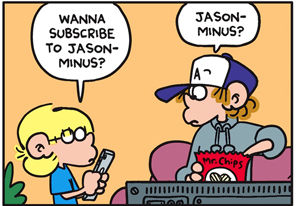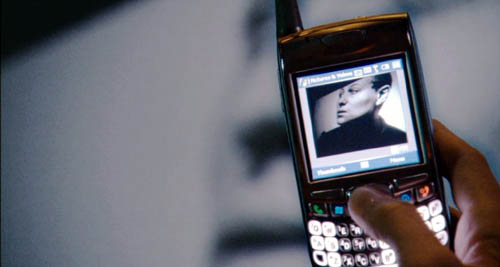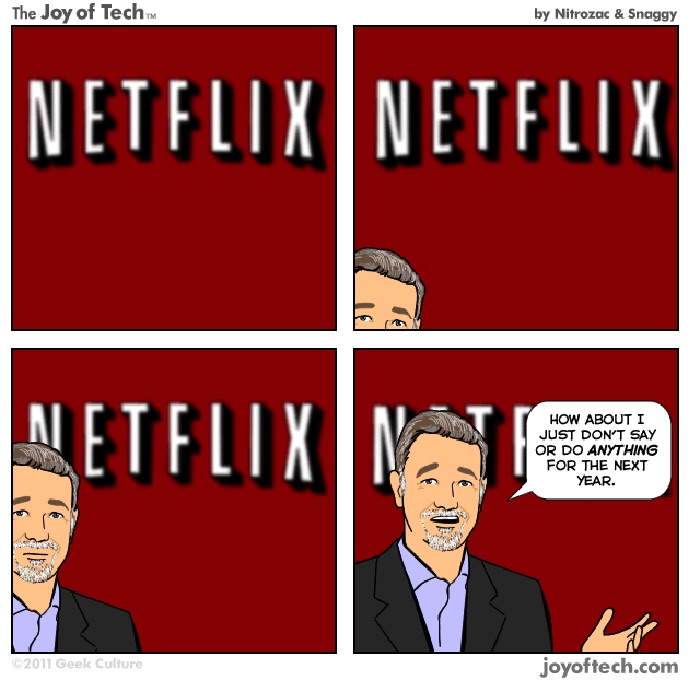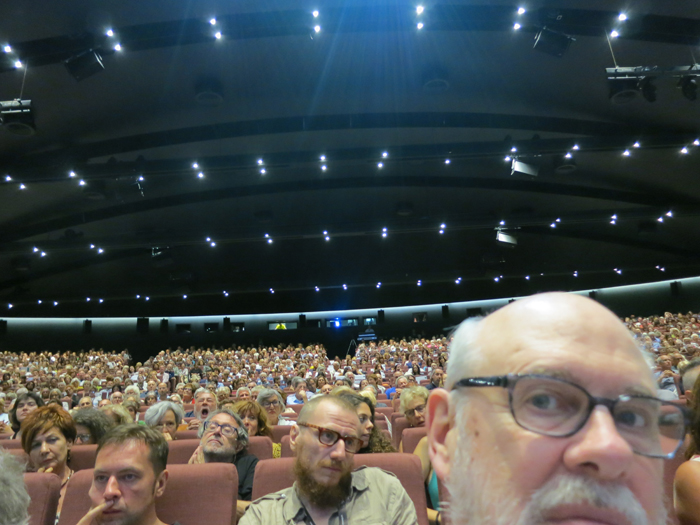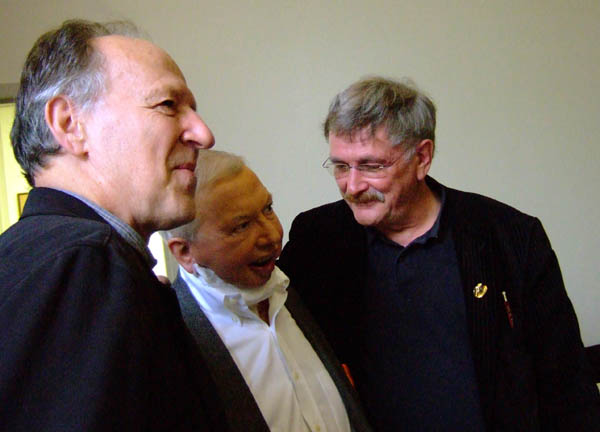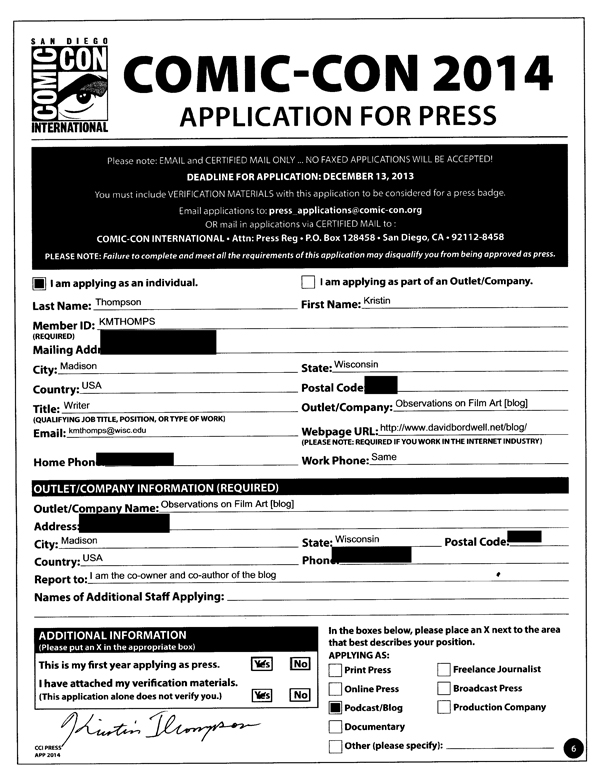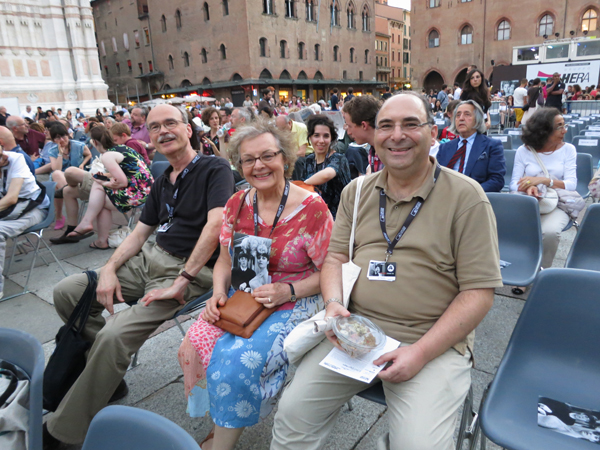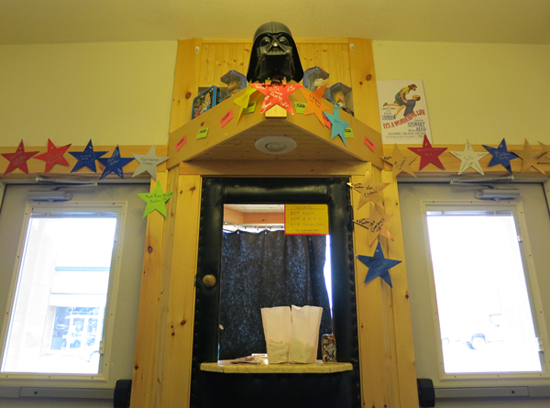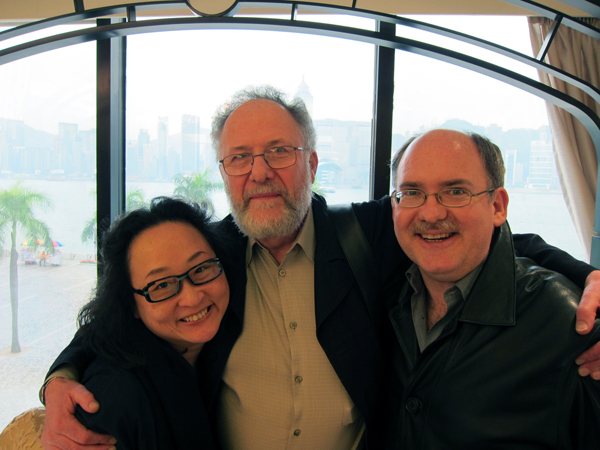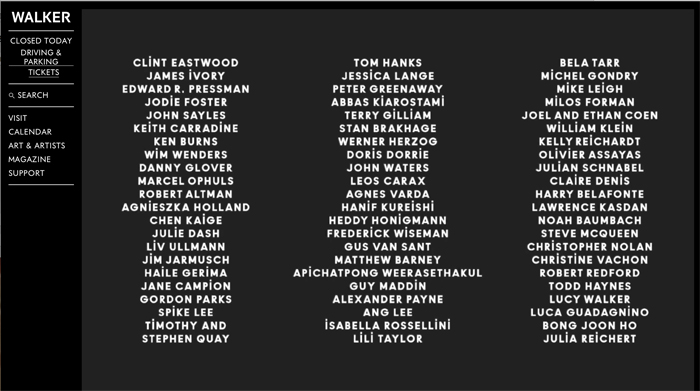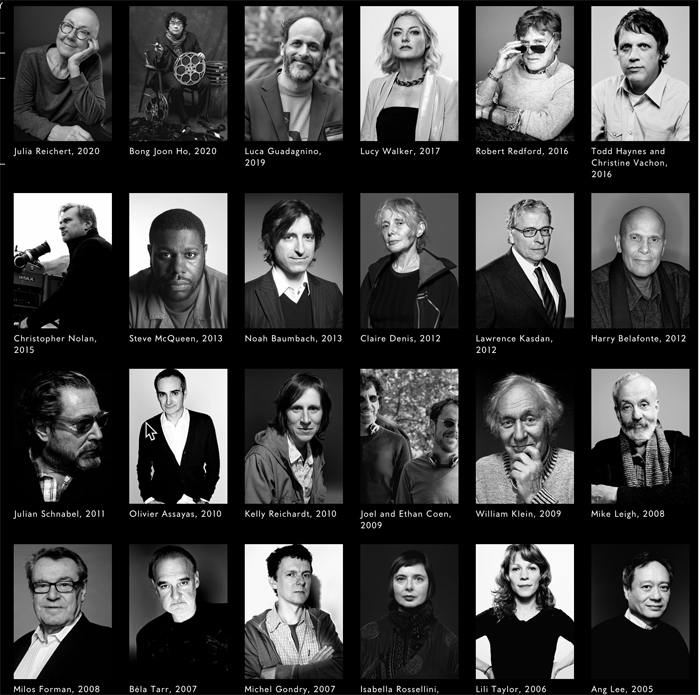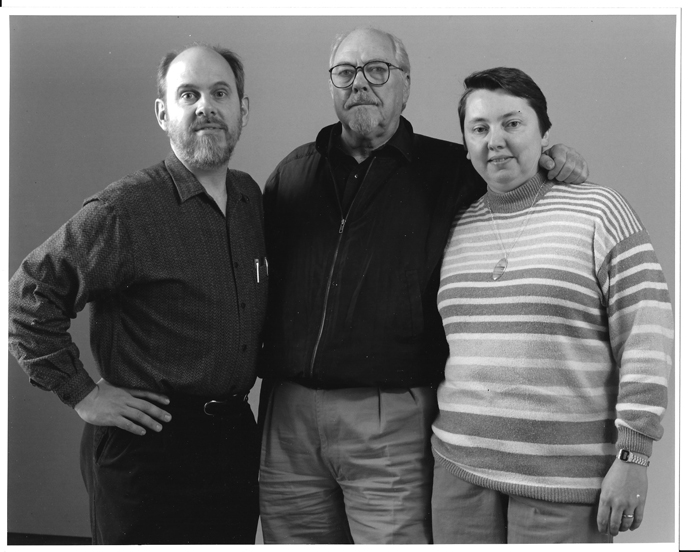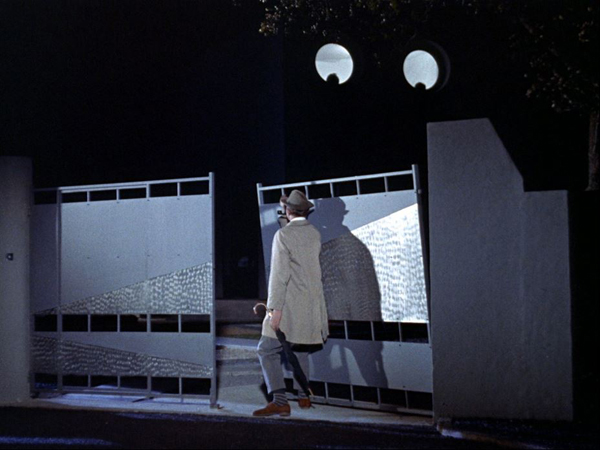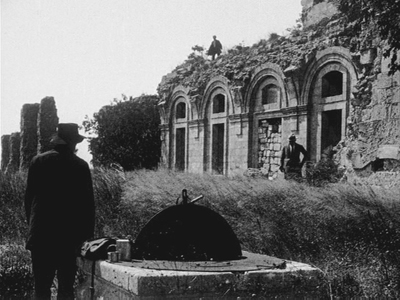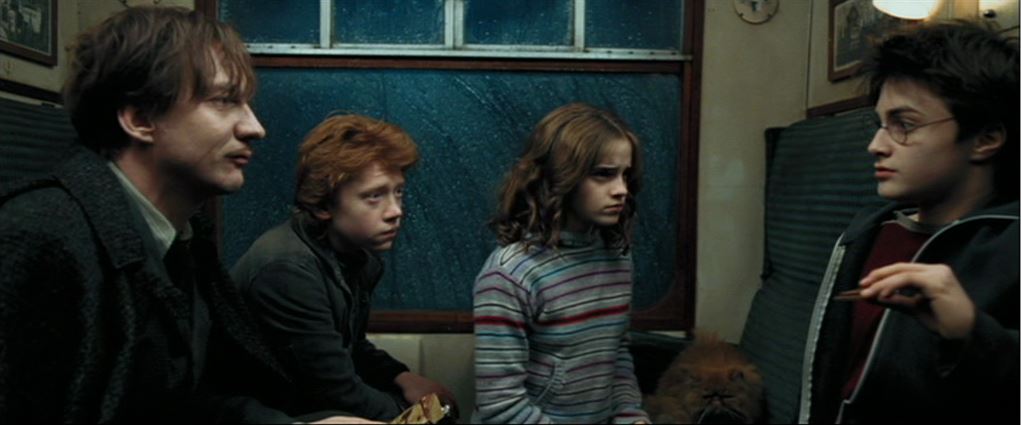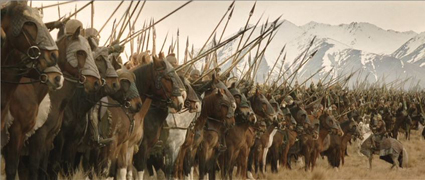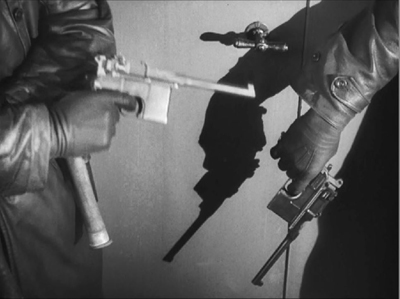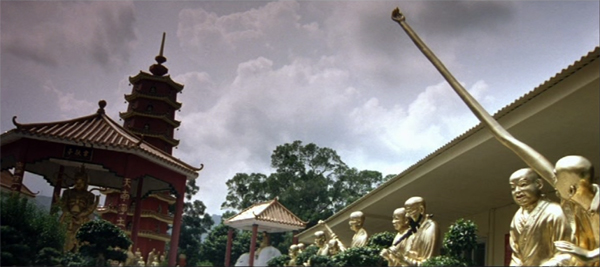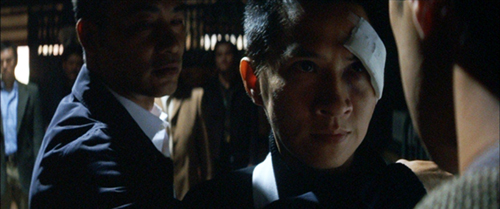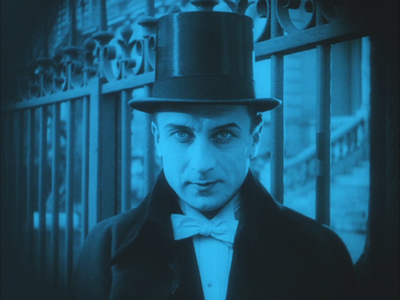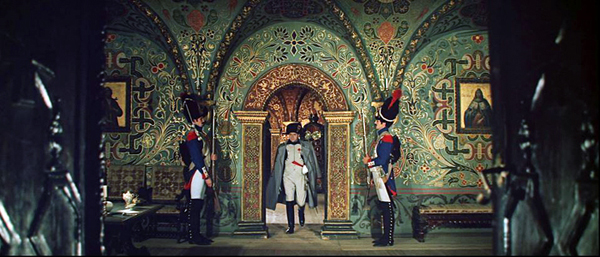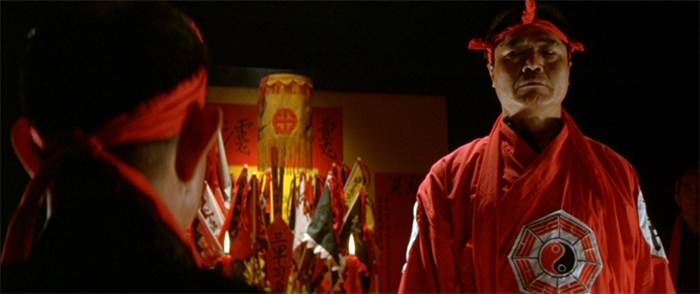Archive for the 'Internet life' Category
Streaming media: All you can eat, until it eats you
DB here:
In 2013 Spielberg and Lucas declared that “Internet TV is the future of entertainment.” They predicted that theatrical moviegoing would become something like the Broadway stage or a football game. The multiplexes would host spectacular productions at big ticket prices, while all other films would be sent to homes. Lucas remarked: “The question will be: ‘Do you want people to see it, or do you want people to see it on a big screen?’”
I wrote the preceding paragraph two years ago, and the Covid outbreak and enhanced technology have made the split between theatrical distribution and streaming distribution even sharper. (And as the Movie Brats predicted, multiplexes are raising ticket prices.) A crisis point was reached last month when Netflix glumly reported that instead of adding 2.5 million customers as it had expected, it lost some 200,000. Worse, the firm announced a likely loss of 2 million more in the next quarter. The news led Netflix stock to fall by over 30%, wiping out over $45 billion in value.
This stunning decline, coupled with Warner Bros. Discovery’s decision to cut the recently launched CNN+, sent shock waves through the industry. Stock values dropped for Disney, Warners, Paramount, and Roku as well, even though some had strong subscription growth. At the moment, disillusion seems to be settling in. A Wall Street analyst has noted:
We think the industry is facing a point of no return in which the economics of the old models look increasingly frail while the potential of the brave new world now appears overly hyped.
Discussions of mergers, acquisitions, and big company restructuring are ongoing, with layoffs already starting.
As researchers, we at The Blog try to see past current convulsions to larger patterns. But it seems plausible that we are approaching some significant changes. Without trying to predict much, and being no expert on streaming tech, I still thought I’d try to think through some ideas about the state of streaming and its historical significance.
An interim report
The Future of Content, Variety Intelligence Platform April 2022, p. 10.
Best to start with some basic information. Here’s what I came up with, all subject to correction and nuancing.
Streaming is now firmly established as a distribution/exhibition platform. It’s now the focus of all major US media conglomerates and it’s a market force every independent producer and company must reckon with. Broadcast television is waning. Viewership is declining, and this year saw a ten-year low in the number of pilot shows ordered by the networks. Cable subscriptions are likewise plummeting. Over the last ten years, cable channels lost 30-50% of viewers. Only the Discovery channel managed to grow, and live sports (e.g., ESPN) hung on, though damaged by the pandemic. Globally, streaming is growing rapidly, with both Hollywood majors and national and regional media firms plunging in.
Theatrical film, severely curtailed by the pandemic, is staggering. In nearly every country of the world, 2021 attendance was half or less that of 2017-2019. Studios are now releasing far fewer features, even in the crowded summer months. About 1000 theatre locations have not reopened since early 2020. Los Angeles has lost the Arclight and Pacific Theatres chains and the Landmark Pico theatre. In my home town a five-screen second-run house shuttered during the pandemic, and a six-screen multiplex is rumored to close soon.
As Lucas and Spielberg foresaw, the films that fill multiplexes are blockbuster franchises. So far this year, Spider-Man: No Way Home and Dr. Strange in the Multiverse of Madness have done robust business, and exhibitors confidently expect big turnout for Top Gun: Maverick and Jurassic World Dominion. The surprise success of Everything Everywhere All at Once ($47 million box office) doesn’t mitigate the bleak prospects for most offbeat theatrical fare. Prestige films, romantic comedies, arthouse films, and many genre pictures can’t usually yield big enough returns, and the aftermarket–cable, DVD, and other ancillary outlets–which helped support them in the past scarcely survives.
Which leaves streaming as a primary source of filmed entertainment. At least 86% of US households access streaming services, either by subscription (SVOD) or as ad-supported services. The result is an immense amount of choice. You can browse studio libraries, imports, straight-to-streaming features (e.g., the latest Pixar releases) and series (e.g., Inventing Anna, Tokyo Vice).
Except for Netflix, Amazon Prime, and Apple+, the major streaming services are aligned with US entertainment conglomerates. Indeed, streaming made Netflix and Amazon entertainment behemoths, as attested by recent Academy Awards and Emmys.
Exact figures fluctuate, but the principal subscription streamers vary enormously in scale. At the beginning of this year, pre-meltdown, Netflix declared a global subscription base of about 220 million, with Disney+ at 196 million. Paramount claimed about 56 million (incuding Showtime and other offshoots), Discovery 22 million, and Peacock 24.5 million, including both paid and free. According to Amazon, over 200 million Prime members streamed material in 2021. As of March, Apple+ was estimated to have 25 million paid subscribers, with about twice that number benefiting from access via promotions (e.g., purchase of Apple hardware).
The simultaneous theatrical/streaming release (Dune, Wonder Woman 1984) is becoming rare as audiences return to theatres, but it remains an option (e.g., Firestarter). More common is a strategic delay far less than the usual ninety-day window that was common before the pandemic. The Batman opened in multiplexes on 4 March and was streaming 18 April. Universal and Paramount are prepared to send a feature online 17 days after theatrical release.
Fickle audiences and fluctuating “content” create churn. As a monthly subscription transaction, paid streaming lets consumers depart at will. Canceling cable subscriptions was difficult due to long-term contracts and obstreperous bureaucracy. Unsubscribing to Netflix or Apple+ is a lot easier. In addition, cable programming had a considerable stability, with long seasons and evergreen attractions. Studios signed extensive licenses for films and series, since cable was a perpetual money machine. Moreover, a movie might be available on several cable outlets. Now, however, the streaming industry faces audience churn.
Defections are common, especially among the young. An April survey found that nearly a third of Gen X subscribers and nearly half of Millennial and Gen Z subscribers have both added and dropped at least one streaming service in the last six months. Overall, nearly a third of subscribers say they have canceled at least one service in the same period. Web-experienced viewers are adept at hopping onto and off the latest thing.
Churn is accentuated by the exclusivity of the new media oligopoly. As the majors discovered the money to be made, they regained control of their library licenses. Netflix had The Office, its most popular attraction, until Warners took it back in 2019–soon after Netflix had renewed it for $100 million. The turnover is ongoing: this month Netflix lost Top Gun, the Ninja Turtles, the Muppets, Marvel TV series, and the first six seasons of Downton Abbey. The majors have gradually reasserted the exclusivity of their product.
As competition has intensified, streamers have been forced to acquire their own programming, both films and series. The pool must be refreshed to retain current subscribers and attract new ones. The problem is that once the new material has run its course, viewer loyalty can wane. This is especially true when the streamer dumps a full season of a series for bingeing: it encourages newcomers to sign up briefly and then defect. Disney has executed a powerful balancing act between legacy material and new offerings (Pixar features, Marvel spinoffs) that keep audiences faithful.
Streaming is not yet profitable. Broadcast and cable television are far more lucrative because they gain revenue from advertising and fees. Disney and Universal each lost about$2 billion on streaming in 2021.
Hence the concern over Netflix’s April report of decline in subscriptions. Streaming is its core business. A loss of $2 billion for the Disney conglomerate (parks, cruises, ABC TV, etc.) amounts to a rounding error. The majors’ deep pockets can sustain streaming enterprises for some time, but Netflix is far more vulnerable.
The streaming services are investing huge amounts in new “content.” The major providers are estimated to spend $50 billion acquiring projects this year. Producers are in a powerful position to demand big budgets to outmatch the competition. The costs are exacerbated by the high demands of talent, who now expect to be paid largely up front, since there is little opportunity for the deferred fees and back-end deals that depend on ancillary revenue.
No wonder then that several services have raised subscription rates. More drastically, in its current crisis Netflix has announced plans to offer an ad-supported tier of the sort already provided by Universal/NBC’s Peacock. Other services, Disney included, will probably shift to a similar option, especially since there is some evidence indicating that consumers will accept commercial interruptions in exchange for lower fees. Netflix also plans to control password-sharing, which helped it grow recognition but in the face of intense competition depletes its audience. It may be harder to combat the use of virtual private networks, aka VPNs, which allow roundabout access to region-based offerings.
One monetization strategy seems to be the rebirth of windows. Once a high-demand film is released to streaming, the service can add an upcharge for accessing it. Blockbusters like The Batman and the new Spider-Man trilogy were launched online with an extra fee for initial viewing. Over time, the prices fell gradually, just as in the old first-run/ second-run days. Even classics can benefit from premium treatment: The Godfather is free on Paramount+, but a rental costs $3.99 on Amazon Prime and Apple+. Arthouse fare is even more privileged; I paid $19.99 to see Drive My Car in its online release, though now it’s free on HBO Max.
It’s still TV
Bill Amend, Foxtrot.
In the late 2000s, streaming video entertainment was the province of mostly smallish, scattered companies like Twitch, Pluto, and others. Netflix and YouTube also took the plunge. Hulu, a consortium of Fox, Universal, and Disney, represented the majors’ initial effort to explore the market. As download speeds improved, problems with buffering and latency were overcome by new streaming protocols.
Soon enough, a familiar cycle emerged. Tim Wu’s book The Master Switch shows that mass information technologies (telegraph, telephone, film, TV) tend to consolidate into oligopolies. Major companies buy or kill off the competition. This happened with streaming, as one by one the big players came to the foreground. Netflix had early-mover’s advantage, having pioneered the distribution of DVDs by mail, and Amazon had a massive customer base in place already. The studios had helped Blockbuster wipe out small video-store chains, which had demonstrated the existence of a massive market, then turned their attention to selling discs directly to consumers. In 2019 the big players began to consolidate control over the expanding streaming landscape.
By acquiring other services (e.g., Paramount’s buying Pluto) and assembling proprietary components already in hand (e.g., WarnerMedia’s repurposing HBO Go), the firms have come up with integrated platforms. Disney+ launched in 2019, Peacock and HBO Max in 2020. Discovery+ and Paramount+ appeared in 2021, and Amazon bought MGM earlier this year. Sony, while licensing its film releases to its counterparts, has focused on animation by picking up Crunchyroll, which will absorb Sony’s Funimation service.
It’s early in the game, and it will take time for the companies to reassemble libraries that have licenses yet to expire. Doubtless many titles will be available for premium rental on rival sites, since no company wants to leave money on the table. Still, it seems clear that a considerable siloing of “content” will enable firms to enhance their power over their intellectual property. From this standpoint, we can think of streaming as a new phase in the development of home video.
In the earlier entry, I argued that home video formats gave the consumer a great deal of freedom. Even cable promoted “appointment viewing,” but tape, and then DVD, allowed the consumer a lot of flexibility. You could buy or rent a movie and watch it when you pleased. You could copy it too. Convenience is always a plus in a consumer item, and home video added to it a welcome price point: renting a tape or disc was cheaper than buying a movie admission, and in discount bins you could find a DVD for a few bucks.
With physical media, movies became manipulable by the audience. Ripping a DVD yielded a file that could be remade. Mashups, Gifs, and other transformations were feasible. Video essays changed film studies, and satire, homages, and fan analyses filled the internet. You could play with your movies.
Streaming withdrew this flexibility but offered greater convenience. A platform combines the array of a video store (think of those tiled pages as display racks) with push-button access. You still have the option of time-shifting, and you can share home viewing with others. But there’s no longer a physical medium. You don’t own or rent the film as object; you have bought access to it as a display, and only when you’re online. (“Buying” a digital copy is no guarantee of possession, if the service loses its license to the title.)
For decades, movie exhibition was a service business. We paid for the experience. Briefly, between 1980 and 2020, films became consumer artifacts as well. Ordinary folk enjoyed the sense of possession shared by film collectors of earlier decades. But with the decline of discs, we are once more paying for the experience while the object lies elsewhere.
Because of Hollywood’s preternatural fear of piracy, turning the artifact back into a service is a way to secure intellectual property. Not that people will stop trying to make personal copies. It’s possible to record streaming transmission, but the majors are counting on several factors. Just as people became tired of piling up DVDs they probably won’t watch, they could tire of filling hard drives with rips.
A few hardcore headbangers will enjoy sticking it to the man, but most people will reckon if you already pay for streaming the movie, why copy it? Given customer inertia and the convenience of streaming, why bother to pirate a movie that’s probably on streaming somewhere, available whenever you want? The trouble and expense of ripping may be greater than simply signing up for another subscription service. There are certainly overseas markets for pirated streaming shows, but as the companies expand their platforms abroad, piracy may diminish.
In sum, streaming has become the next step in the majors’ reassertion of control over their IP. It surpasses the old video store’s inventory, offers the convenience of click-ordering and time-shifting, and retains the advantages of in-home consumption. All we relinquish is ownership of a copy. Now that SVOD services are generating new attractions, providing long-running series with spaced-out hour-long episodes, and exploiting advertising-supported tiers, we are getting a version of fully on-demand cable TV.
We can glimpse this prospect in the demand for bundling, or aggregation. Customers’ biggest complaint is that there’s too much choice. The 200 channels of maximal cable are dwarfed by the streaming torrent. Nielsen estimates that as of last February there were 817,000 unique program titles available. Hence the emergence of streaming MVPDs, the “multichannel video programming distributors.” They provide a mix of movies, broadcast network series, classic TV, sports, and cable news. The best example is YouTube Live, which charges $64.99 per month, far beyond most of its SVOD competitors and reminiscent of classic cable fees. Yet YouTube Live is the most popular MVPD.
Add to this the number of FAST outlets, free ad-supported streamers such as Pluto, Tubi, Roku, Freevee, et al. With MVPDs these already constitute about a third of streaming offerings. One survey found that 34% of US consumers would prefer a free streaming service with 12 minutes of ads per hour. Streaming is starting to look like. . . well, just good old TV. The free platforms approximate broadcast TV, and the paid ones are cable reborn.
It takes time to make a classic
Atom Egoyan, Artaud Double Bill (2007).
Streaming demands a constant flow of new material, compared with the relative stability of broadcast TV, so the problem has been how to release it all. Netflix made a splash by dumping entire seasons at once, encouraging bingeing and getting immediate buzz and uptake. Viewers came to expect the big gulp. One survey found that over half of viewers under sixty now want firms to provide all the episodes of a series at once. But this strategy can damage long-term subscriptions by encouraging churn.
It also makes the product forgettable. Most direct-to-streaming films have a short shelf life. Does anybody watch War Machine (2017) or Bird Box (2018) now? Most auteur efforts seem to me to have had little cultural impact, not even Scorsese’s The Irishman (2019, with a mild theatrical release as well) or Soderbergh’s The Laundromat (2019). They came and went fairly quickly. A rolled-out theatrical film had an afterlife, it could circulate through the culture in many ways, and it could find niche audiences. Could The Godfather (1972) have its standing today if it were released straight to SVOD? Are there now “classic” streaming features?
This applies to art films too, I suspect. The international festival circuit allowed films to trickle from the big events to national and regional festivals over months, so outstanding films could build critical response and whet audience interest. Eventually some would find commercial distribution city by city. The pandemic compressed that process as festivals began to allow remote viewing of their screened titles, sometimes to audiences outside the locality. Kino Lorber’s Kino Marquee plan, which allowed simultaneous online access to new releases across the country, was a creative effort to maximize a film’s reach. Sponsored by local theatres, the plan in effect yielded a quick nationwide release on a scale that couldn’t easily be matched in pre-Covid days. It’s hard to imagine, though, that L’Avventura (1960) would have its standing today if it had played so quickly throughout the country.
Producers are belatedly realizing that the slow rollout characteristic of classic film distribution had the advantage of building audience awareness. A theatrical trailer is targeted toward habitual moviegoers and word of mouth. Theatrical releases garner promotion and extensive critical coverage that last longer than a Twitter alert. Theatrical screening can make a film an event–not always successfully, but at least it offers a chance. At a 19 May Cannes panel, a Swiss distributor pointed out that theatrical releases do better on streaming than straight-to-streaming ones.
The rationale is partly financial, of course. Here is the new head of Warner Bros. Discovery David Zaslav:
When you open a movie in the theaters, it has a whole stream of monetization. But more importantly, it’s marketed and builds a brand. And so when it does go to a streaming service, there is a view that that has a higher quality that benefits the streaming service.
There’s also the fact that a film on the big screen has a force that even a home theatre display can’t match. Another executive notes: “The undivided attention you get from an audience in a theater is where franchises are born.”
Classics, too. Even if most people see most films on monitors and personal screens, there need to be places for the proper display of them–living museums of cinema, in archives and cinémathèques but also in multiplexes and art houses. If streaming is making films ephemeral, we need to hang on to screening situations that let films claim our full engagement. If cinema becomes more like opera, as Lucas and Spielberg prophesied, let’s all become patrons and devotees, even snobs. Let films ripen over the years in a shared cultural space. Then we may get future masterpieces. Or so we might hope.
Thanks to Erik Gunneson, Peter Sengstock, and Jeff Smith for information and ideas.
One thousand entries and still hanging on
Venice International Film Festival screening 2017 of Rosita, in the Sala Darsena. Pre-coronovirus, no social distancing.
Both of us here:
Kristin:
This, our 1000th entry in this blog, comes at a strange point in our lives, and everyone else’s. Films, all facets of which are our main subject, are nearly gone from the big screens upon which we prefer to view them. Normally at this time we would be anticipating another trip to the Venice International Film Festival, which shows films in venues with very big screens and superb sound systems. Now we’re streaming and watching discs on a medium-size TV.
Back when our first entry appeared, on September 26, 2006, we weren’t thinking about whether we would ever get this far. We didn’t really know what the blog would contain. We hadn’t even come up on our own with the idea of starting it. One of the users of our textbook, Film Art: An Introduction, suggested it.
Back in those days, textbooks were simple things. They were physical, without digital iterations. They might have a handful of online resources, and perhaps teachers could assemble their own custom text from parts of the book. As each revision rolled around, McGraw-Hill invited around a dozen users of the book to fill out a detailed questionnaire, picking out its most useful parts and making suggestions for changes.
We occasionally found these comments helpful, but most of them involved adding more material. We weren’t allowed any additional pages for new editions, so those suggestions, often reasonable, had to be ignored.
I remember vividly, however, one unique comment that ran something like this: “Why don’t the authors start a blog?” (The questionnaires were anonymous, but if you recognize yourself as the culprit, let us know and we’ll all share a virtual laugh.)
Naïve souls as we were, we thought this suggestion might be a good idea. We could provide little essays that complemented the textbook, expanding it, as it were, without extra pages. Of course, it would also publicize Film Art and its companion, Film History: An Introduction.
Starting the blog was relatively easy. David had already created a website (thanks to Jonathan Frome and Vera Crowell) that could host it. Later our long-time web tsarina Meg Hamel set up the blog, to which we could add posts and photos ourselves.
Widened horizons
In the first brief entry, of 26 September 2006, David wrote about Christine Vachon’s recently released book, A Killer Life: How an Independent Film Producer Survives Deals and Disasters in Hollywood and Beyond. The idea was that Vachon touched upon aspects of film form and style that were relevant to ideas we discussed in Chapters 1 t0 3 of our textbook. Soon, though, we departed from the idea of tailoring our content strictly to Film Art.
The next two entries (here and here), again by David, reported from the Vancouver International Film Festival. The timing was purely coincidental. Tony Rayns had invited him to be a judge for the Dragons and Tigers competition for young Asian filmmakers, and it was his first visit. So he was officially there as a guest, not a blogger, but those two entries were already more substantial than the opening one. And of course he was happy to see two old Madison friends, film programmer Alissa Simon and filmmaker, and former DB teaching assistant, James (Jim) Benning.
He followed those immediately with two reports (here and here) from the American Society for Aesthetics conference, which happened to take place in Milwaukee that year. And I followed that by tearing apart disagreeing with an article in the Wall Street Journal. Its author predicted the end of logical Hollywood plotting because one interactive movie had been released. Its title, “The end of cinema as we know it–yet again,” could have been used for quite a few pieces we have written over the years. These early entries, modest though they were, set a pattern for some of the motifs that have run through the blog ever since (at least, until the present crisis).
In short, we branched out in any direction that events or our fancies took us. David even did some non-film pieces, mostly about related arts and about current politics.
Some of our entries could be of use to teachers and students. Each year in advance of the start of the school year, I post an entry called “Is there a blog in this class?” (This year’s is coming up soon.) There I suggest, chapter by chapter, which entries are relevant to each. We also started putting call-outs to selected entries in the textbooks themselves. In the e-editions these are live links. We hope these are of use to the people who were the original putative targets of the blog.
After sixteen years, we have noticed how the blog has changed us as scholars and cinephiles. Mostly this has been for the better.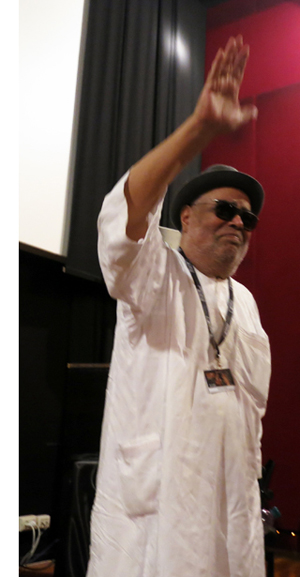
For one thing, publishing outside academic, peer-reviewed contexts has given us the freedom to write in a bit less formal prose. I had already adopted this approach for The Frodo Franchise: The Lord of the Rings and Modern Hollywood, in which I tried to balance research with a more casual style that could appeal to fans of Peter Jackson’s adaptation. (That book had recently gone to into press when we started the blog.) David’s two most recent books and the one he is working on now reflect this change, and that has been commented on–mostly favorably.
Perhaps more importantly, the blog made us more visible in film circles outside of academia. After all, blogs are part of social media, albeit by now a rather old-fashioned element in that vast internet swirl. By flinging our stuff out into the ether, we had unwittingly ventured into journalism of a sort. We found ourselves able to get press accreditation to actual events out in the real world.
David’s visit to Vancouver in 2006 was not as a blogger, but over the years that followed, we remained welcome guests in part because we reported regularly on the films we saw. In advance of David’s retirement from university teaching in 2004, we had envisioned ourselves, among other things, having more time to attend festivals. This turned out to be feasible, as we added reports on Hong Kong (which David had already started attending), Il Cinema Ritrovato (Bologna), Cinédécouvertes (Brussels, sadly no longer held), Ebertfest, Palm Springs, Torino, and for the past three years, Venice, as well as our own Wisconsin Film Festival. On the right, you see Med Hondo, who visited Bologna in 2017.
The blog also led us in a modest way into the world of streaming. We have long had a friendly relationship with the dedicated team at The Criterion Collection. We’ve done supplements for them and with their cooperation used clips from their classic films in online educational materials for our textbooks. (The folks there view us as educating their future customers, and we hope that has been the case.) Whether they would have asked us and our collaborator Jeff Smith to contribute a series of video essays on the films streaming on The Criterion Channel is unclear, but we, and possibly they, thought of such a series as a sort of extension to the blog. Indeed, we gave it the same name, “Observations on Film Art.”
Entries in that series are more elaborate than blog entries, of course, and we feel it is something of an accomplishment to have reached thirty-seven to date, with more unedited material already “in the can.” It is a privilege to be involved, even in a small way, with what has quickly become the leading art-house/indie/classic film streaming service, and we suspect we owe that in part to the blog.
Film history passing before our eyes
Werner Herzog, Roger Ebert, and Paul Cox at Ebertfest 2007.
Our regular attendance at the festivals has been a huge boon in allowing us to keep up with many of the year’s new films on the big screen rather that waiting for the home-video release or, more recently, streaming availability. Lately we have been revising Film History for its fifth edition, and I found myself going back to our festival reports for succinct descriptions of films we considered important enough to figure in our updates of the late chapters.
Festivals also provide a delightful way to follow the careers of young filmmakers without realizing until later that one was doing so. For example, on July 15 the Venice festival announced that the head of the jury for the Giornate degli Autori program for promising filmmakers would be Israeli director Navad Lapid, whose Synonymes (2019) won the Golden Bear at Berlin last year. I wrote about it when we saw it at the Torino festival in November. The press release mentioned that Lapid had previously directed two other features, as well as many shorts. I had seen both of the features at Vancouver and blogged about them: Policeman (2011) and The Kindergarten Teacher (2014). So I had seen all of Lapid’s feature films without planning it that way. It is impressive to see the leap in complexity with Synonymes after two good films that I might never have seen had I not regularly visited that and other festivals.
Similarly, our long relationship with Ebertfest has given us a chance to meet both established and upcoming film artists. Thanks to Roger’s support, and the continuing efforts of Chaz Ebert and Nate Kohn, that remarkable event in Champaign-Urbana has become central to US film culture. Through Ebertfest we forged tight friendships with Jim Emerson, Matt Zoller Seitz, and other people working to broaden audiences and deepen appreciation of life-changing movies.
Apart from attending film festivals, getting press accreditation has benefited me in another situation. As part of my involvement in researching the Jackson Lord of the Rings films, I participated in a panel put on by TheOneRing.net at Comic-Con 2008. (I blogged about that banquet of popular culture here, here, and here.) Years later, I wanted to attend Comic-Con 2014 to witness the last of the big Hall H promotional events for a Jackson Tolkien adaptation, the third film of the Hobbit series. That time I wasn’t a guest, but I applied for a press pass based on being a blogger and got one.
I haven’t gone back, and I think my accreditation has lapsed, but as long as we keep the blog going, I probably have the option.
For us personally, the blog has played a role that a plain old-fashioned log of events would. (It’s worth remembering that “blog” comes from “weblog.”) We haven’t keep lists of the films we see, but sometimes I wish I had. Going back through the blog, though, is a great way of waxing nostalgic over the wonderful travels we have enjoyed and the friends in so many parts of the world that we have visited and shared meals with in happier circumstances–opportunities which we hope will come again.
We are reminded of films we saw, as well. Every now and then we have occasion to look back over older entries, seeking to create a link in a new blog. We often run across entries we don’t recall writing and titles we don’t remember seeing until the blog posts jog our memories. After a certain point we vowed to include illustrations in every entry, and that makes these visits to our past all the more vivid and enjoyable.
DB here:
I second everything KT has said. And more! See below.
Expanding the conversation and rapid response
Bologna, Piazza Maggiore screening of A Hard Day’s Night, 2014: Richard Koszarski, Diane Koszarski, and Lee Tsiantis.
Living online has given my retirement years a new dimension–of thinking, of access to art and ideas and new friends. I sometimes say that our blog is Internet 1.5–a publishing platform without the bombardment of instant comments. We’d get more traffic if we allowed comments, but (a) so many comments columns are insults to the human spirit and (b) we don’t want to spend time monitoring them. (But you can send an email.) The result is something like a more-or-less weekly magazine column, except that we can say what we want, write as long as we want, and include stills and clips. And there’s no editor saying we can’t use “diegetic.”
From another angle, the blog has been a substitute for my teaching. It allows me to develop ideas in ways that are informal, less precisely chiseled than they would be in a book or article. Call it “para-academic,” or “informal scholarship.” The blog has also let me send out communiqués about research findings around movies I was studying in Brussels (say, here or here) or at the Library of Congress (here and here). And, as Kristin mentioned I think the blog has encouraged me to write more conversationally than an academic publication would.
Retirement has encouraged me to think through recent events in film culture more fully than I could when I was teaching, and so some blog entries have become more topical. The big example is my decision to write about the digital conversion of exhibition back in 2011. I thought that somebody could record things as they were happening on the ground, and I tried to do that in a series of entries. One looked at how a small theatre in Harmony, Minnesota, confronted the crisis.
That series in turn became a little digital book that has generated a surprising amount of interest and remains, I think, a useful thumbnail history of a transitional period. From another angle, our interest in Christopher Nolan’s films allowed us to write about them as they came out, and then to revisit them in a broader perspective in another digital book, now in its second edition. It ruffled some feathers, leading me to speculations about blunt-force cinephilia. As ever, the blog proved a good forum for developing further ideas.
Speaking of new editions, having a web presence has enabled us to make available out-of-print versions of our work. Kristin’s Exporting Entertainment was put up on the main website in its original 1985 form, but I revamped both Planet Hong Kong and On the History of Film Style for digital editions when my publisher put them out of print. For both, I was able to use blog entries (here and here) to introduce them to a wider range of readers than would probably learn of them otherwise. It’s been gratifying to see both used as textbooks in courses as well.
Go back to the “para-academic” idea. I’ve been surprised to see that while academics have been supportive of our online efforts, they seem still to treat them as secondary to our print publications. By contrast, I’ve learned that there are a great many people who love films but who have found a lot of academic talk about cinema intimidating, dense, or dull. Some of these cinephiles are interested in ideas, if those ideas are presented in concrete and vivid ways. Our blog entries try to bring our notions about film form and style, about film history and film experience, to those readers.
An example is my never-ending crusade against reflectionist interpretation, the idea that a movie coming out today (well, maybe no movie is coming out tomorrow) reflects the Zeitgeist or national character or current events in a straightforward way. I won’t bore you with my arguments against this idea (see here and here and here), but without a blog I don’t think I’d be able to ride this hobby horse so intently. Thanks to the rapid-response capability of blogging, I can draw on current releases from The Dark Knight to The Hunt. I don’t know if I’ve convinced anybody that we can talk about film and culture more subtly if we take into account form, style, and genre. But the opportunity to use recent releases as AV demos has helped me refine my case.
This isn’t “popularizing” our research, I think. It’s an effort to see how research can stimulate people. Many readers, I think, know us only through the blog, and that’s fine. I like reader-friendly texts. I like to read in art history, cognitive psychology, music history, philosophy, and the like, but I’m not equipped to grasp the most technical literature in those fields. I need the “outreach” publications of Gombrich, Barzun, Baxandall, Sontag, Pinker, Taruskin, Hogan, Alex Ross, Mary Beard, Noël Carroll, and the many more academics and intellectuals who are not only researchers but, in the strongest sense, writers.
People
Hong Kong International Film Festival 2011: Joanna Lee, Michael Campi, and Ken Smith.
The blog has given us a chance to call attention to institutions we think deserve wider recognition. Those include the Arthouse Convergence, the Danish Film Institute and its archive, the Konrad Wolf Film School at Babelsberg, the Fox archive, the AMPAS archive, the Munich Film Archive, the Austrian Film Archive, George Eastman House (and its magnificent Nitrate Fest), and of course our stalwart rock through the years, the Royal Film Archive of Belgium (now called Cinematek). There’s our own Cinematheque too, as well as little theatres we come across in our travels (here and there). We even find a “lost” film on home turf. There’s the annual Summer Film College in Antwerp, which has proven endlessly stimulating to my thinking (and viewing). And of course there’s the Society for Cognitive Studies of the Moving Image; we try to cover its annual get-together.
We also like supporting hard-working distributors like Milestone (and here), Flicker Alley, Editions Filmmuseum, and again of course Criterion, who devote great energy to opening up unknown byways of cinema. The Criterion team–Peter Becker, Kim Hendricksen, Grant Delin, Curtis Tsui, Elizabeth Pauker, Abbey Lustgarten, Susan Arosteguy, and many others–have made our lives continually exhilarating.
The blog has brought us closer to film artists too. At Ebertfest Kristin interviewed Nina Paley, and I got to talk to Doc Erickson about his long career working at Paramount and with Hitchcock. We’ve done a couple of interviews with director/screenwriter David Koepp (here and here), and Kristin questioned archival honchos Mike Pogorzelski and Schawn Belston about the prospect for a celestial multiplex–which even streaming is unlikely to deliver. We got to meet Bill Forsyth, Terence Davies, James Mangold, and Damien Chazelle, and because we try to understand the creative choices filmmakers face, we got to ask them about their craft.
As for critics–well, there are too many to mention here. Online and at festivals, we’ve come closer to a great many smart, dedicated critics and reviewers I have to mention at least Manohla Dargis, Kent Jones, Dave Kehr (now a sterling archivist), Justin Chang, Chuck Stephens, Bérénice Reynaud, and the Venice College team (Glenn Kenny, Stephanie Zacharek, Mick LaSalle, Michael Phillips, Chris Vognar, Ty Burr, all under the avuncular guidance of Peter Cowie).
The rapid-response advantage has also given us the opportunity to celebrate colleagues, particularly when they’ve written books we think cinephiles would enjoy. Then there are the colleagues we mourn. In the last year, the deaths have come quickly. I haven’t fully come to terms with the loss of Peter Wollen, Paul Spehr, Thomas Elsaesser, and Sally Banes. But we have acknowledged the importance of others who touched our lives, from Andrew Sarris and Edward Yang to Richard Corliss and Edward Branigan and of course Donald Richie and Roger Ebert. Necrology, the blog has taught me, is a heavy obligation.
On a less somber chord, the blog has given us the happy chance to host many excellent guest bloggers. We tapped them because their research is first-rate, and they widen out our explorations of film art within film history. So feel free to visit the contributions of:
Matthew Bernstein on Preston Sturges’ cleverness.
Kelley Conway on three women of Cannes, on French Films at Vancouver, and on La La Land.
Leslie Midkiff DeBauche on silent-era fangirls.
Eric Dienstfrey on recording and mixing in La La Land.
Rory Kelly on the character arc in Hollywood screenwriting.
Charles Maland on James Agee.
Nicola Mazzanti on silent frame rates.
Amanda McQueen on La La Land as a modern musical.
Tim Smith on eye-scanning and watching There Will Be Blood.
Malcolm Turvey on mirror neurons.
Jim Udden on visiting the set of Hou Hsiao-hsien’s The Assassin and the film that resulted.
David Vanden Bossche on 3D in Europe.
And of course the many guest entries by our collaborator on our Criterion Channel series Jeff Smith, who has written about Foreign Correspondent, Trumbo, The Player, The Devil and Daniel Webster, the Atmos sound system, Memories of Underdevelopment, Three Colors: Red, Once Upon a Time . . . in Hollywood (here and here), True Stories, Breaking the Waves, and Oscar song nominations (here and here and here and here). Watch for Jeff’s upcoming entry on Ennio Morricone.
Back in 2011, we put together a collection of blog entries as a book: Minding Movies: Observations on the Art, Craft, and Business of Filmmaking (University of Chicago Press). It consisted of 31 entries, grouped in rough thematic sections. This leads us to muse on how many books one thousand entries equates to. That’s roughly 32, though far from all of our entries are worth anthologizing. (The entire blog, however, is being archived by the Wisconsin Center for Film and Theater Research here on campus.) Could we have used our time better in writing actual books? We think not. There is a pleasure in writing on minor subjects occasionally and in getting our thoughts to the reading public immediately. Books, after all, require more research than we put into most of our entries, and there is the editorial and publishing process to go through. And we are past the points in our career where we need to expand our CVs.
In short, although we occasionally feel uninspired, especially in these days of no travel, limited socializing, and practically no theatrical film exhibition, we are glad that we started the blog nearly fourteen years ago. Once those activities resume, we’ll have the places we go, the friends we pal around with, and the movies we see to write about. We seriously doubt that we will ever make it to 2000 entries, but who knows?
Venice International Film Festival, 2019. Photo by Gerwin Tamsma.
Auteurs by the hour: The Walker Art Center Dialogues
DB:
For decades, the world’s top filmmakers have made pilgrimages to the splendid Walker Art Center of Minneapolis. A series of astute curators of film provided a keen public with in-depth conversations about cinema. Now, suitable for a podcast-friendly era, the Center has given the world precious recordings of those discussions. The talent on display is overwhelming. Here’s just the half of it.
Some dialogues are audio only, but many are carefully mounted videos, with stills and clips. The questioners have been chosen from the ranks of archivists, programmers, critics, and academics. (I did one with Altman in 1992.) There are also written transcripts available for download.
In all, this should provide cinephiles with a rich array of ideas and information for years to come: Film history on the hoof. Thank you, Walker demi-gods, for reminding us that the Internet can be benign.
DB and KT with Robert Altman, Walker Art Center 1992.
Quality bingeing
Mon Oncle (1958)
Kristin here:
Or binging, if you prefer. Either is an acceptable spelling.
Streaming entertainment is one of the things that are saving our sanity as we sit in our homes. With the theaters closed and new movies either delayed or sent straight to streaming, movie critics, other journalists, and movie buffs are now making best-films-to-stream-during-the-pandemic lists a new and common genre across the internet.
Maybe you’ve been streaming a lot of TV series, even ones you’ve already seen, and are feeling a bit guilty about that. Maybe you’re longing for something more worthwhile to watch but wishing that that something would take up more time than your average feature film.
For those people, I offer a list of films to binge. These are either long in themselves or are split up into many parts that can be binged just like TV series. Others are stand-alones but can be grouped in meaningful ways.
My experience is that online disc orders are taking longer than usual. With Amazon prioritizing health and work-at-home supplies, Blu-rays are taking around two weeks rather than two days. (David and I, of course, count Blu-rays and streaming as part of our work-at-home requirements.) While you’re waiting, I’ll bet many of you have some of these discs on your shelves already and have always meant to make time for them. That time, lots of it, has arrived.
Serials
Many fine serials were made in the silent era, but Louis Feuillade remains the director that most of us think of first in relation to this format. His three great serials of the 1910s (not including, alas, the fine Tih Minh [1918]) are available on home video.
Fantômas (1912). 5 episodes, 337 minutes. Fantômas is available in Blu-ray and DVD from Kino Lorber. David wrote a viewer’s guide to it here.
Les Vampires (1915). 10 episodes, 417 minutes. Les Vampires is available on Blu-ray and DVD from Kino Lorber. As far as I can tell, it is streaming only on Kanopy (apart from unwatchable public domain pre-restoration prints).
Judex (1917). 12 episodes, 315 minutes. Judex is ordinarily available from Flicker Alley, though it is currently listed as out of stock. Amazon has 5 left. For maximum bingeing opportunities, watch all three serials in a row and then stretch them out with Georges Franju’s charming remake, Judex (1963) for an extra 98 minutes (it’s $2.99 to stream it on Amazon Prime).
Miss Mend (Boris Barnet, 1926). Three episodes, 235 minutes. The only American-style serial from the Soviet Union that I know of, or at least the only one easily available. I wrote about it briefly when it first came out from Flicker Alley. You can still get it from Flicker Alley or Amazon. We wrote briefly about it here.
Le Maison de mystère (Alexandre Volkoff, 1923). 10 episodes, 383 minutes. I’ve already written in some detail about this long-lost serial. It’s probably not as good as Feuillade’s best, but it’s good fun and beautifully photographed (see top of section) and acted–and long enough to require a meal break. Fans of the great Ivan Mosjoukine (as he spelled his name after emigrating from Russia to France) will especially want to see this one. Available from Flicker Alley
Berlin Alexanderplatz (Rainer Werner Fassbender, 1980) 13 episodes and an epilogue. 15 hours, 31 minutes. Back when it first came out, this was treated more as a film than a TV series. It showed in 16mm at arthouses and archives. David and I drove to Chicago to see the whole thing in batches over a single weekend at The Film Center (now the Gene Siskel Film Center). It’s available on either DVD or Blu-ray as a Criterion Collection set (#411 for you Criterion number-lovers). It’s also streaming on the Channel. Both have a batch of supplements, even the 1931 German film of the novel, so you can stretch the experience out even longer.
Silent serials may work for some families, if the kids have been introduced to silents already through the more obvious route of films with Buster Keaton, Charlie Chaplin, and the other great comics of the era. If not, families can fill their time with more recent films in episodes with continuing stories.
The serial format has had a comeback in recent decades, partly due to the influence of the first Star Wars trilogy and partly to the need for ever expanding amounts of moving-image content in the era of home-video, cable, and internet services. For those who want to binge Star Wars, you don’t need my guidance. Anyway, I gave up after the first of the recent series, the one where Adam Driver took over as the villain. (Not that I have anything against Adam Driver. It was the film.) Even daily life in a pandemic is too short for more.
The Harry Potter series. (2001-2011) Eight episodes, 990 minutes, or 16.5 hours. This series is not high art, but it’s pretty good, highly entertaining (to some, at least), and even has one episode, number three, directed by Alfonso Cuarón, HP and the Prisoner of Askaban (above). The others are HP and the Sorcerer’s Stone (or Philosopher’s Stone in the UK and elsewhere; Chris Columbus), HP and the Chamber of Secrets (Chris Columbus), HP and the Goblet of Fire (Mike Newell), HP and the Order of the Phoenix, HP and the Half-Blood Prince, HP and the Deathly Hallows: Part I, and HP and the Deathly Hallows: Part II (the last four, David Yates). These films are, of course, available in multiple versions, on disc and streaming. As far as I can tell, none of the complete boxed sets have the two last parts in 3D; those have to be purchased separately. Having seen the last film in a theater in 3D, I can say that it doesn’t seem to be one of those films that is much improved if one sees it that way (unlike Mad Max: Fury Road, in the section below).
The Hobbit and The Lord of the Rings extended editions: An Unexpected Journey (2012), The Desolation of Smaug (2013), The Battle of the Five Armies (2014), The Fellowship of the Ring (2001), The Two Towers (2002), and The Return of the King (2003, above). 6 episodes, 1218 minutes, or 20 hours, 18 min. Yes, for sheer length this serial tops them all. Plus there are lots of supplements. Each part of the Hobbit films has one commentary track and a bunch of making-ofs, adding up to 40 hours, 5 1/2 minutes. This pales, however, in comparison with the LOTR extended editions, which have four commentary tracks, totaling 45 hours, 44 minutes. The making-ofs are hard to get exact figures for, but I estimate about 22 hours for all three films. That’s about 68 hours of audio and visual supplements.
To top that off, the Blu-ray set contains the three feature-length documentaries by Costa Botes: The Fellowship of the Rings: Behind the Scenes, The Two Towers: Behind the Scenes, and The Return of the King: Behind the Scenes, all adding another 5 hours, 2 1/2 minutes. (Botes’s films were also included in a “Limited Edition” reissue of the theatrical versions of the LOTR films in 2006.) In toto, if one watches every single item and listens to all the commentaries, one could escape 133 hours and 10 minutes of isolation boredom–and possibly go mad in the process. But treating the bingeing as an eight-hour-a-day job, it would come to 16 1/2 days.
All this does not include the supplements accompanying the theatrical-version discs. These are charming but more oriented toward introducing complete neophytes to the universe of Middle-earth than toward giving filmmaking information.
Series
Series, as opposed to serials, usually involve continuing characters but self-contained stories. Most of the series below could be watched out of order without suffering much. It would help to watch Mad Max first, since it’s an origin story. The Apu Trilogy should be watched in order because it’s about the central character’s stages of life. Each of the M. Hulot films bears the traces of the contemporary culture in which it is set, but one can understand each fine out of order. I saw Traffic first, in first run, and then saw the others.
Mad Max (1979), Mad Max 2, aka The Road Warrior (1981), Mad Max Beyond Thunderdome (1985), and Mad Max: Fury Road (2015) add up to 411 minutes, or 6 hours and 51 minutes. You know them, you love them–but have you ever watched them straight through? We’ve written about Fury Road (here and here). That’s a film where the 3D really does play an active role.
Jacques Tati’s Monsieur Hulot films: Mr. Hulot’s Holiday (1953), Mon Oncle (1958, see top), Play Time (1967), and Traffic (1971). They add up to 7 hours and 4 minutes. Or add his non-Hulot films, Jour de fête (1949) and Parade (1974) for just under an additional 3 hours of hilarity. You can buy all of Tati’s films at The Criterion Collection or stream them at The Criterion Channel. Throw in my “Observations on Film Art” segment on Parade for an extra 12 minutes. And check out Malcolm Turvey’s new book, Play Time: Jacques Tati and Comedic Modernism, soon to be discussed in a portmanteau books blog here.
Dr. Mabuse films plus Spione: Dr. Mabuse, der Spieler (1922), Spione (1928, frame above), The Testament of Dr. Mabuse (1933) and The Thousand Eyes of Dr. Mabuse (1960), adding up to 610 minutes, or 6 hours and 10 minutes. Few if any directors have extended a series over such a stretch of time, and the Mabuse films are quite different from each other (including having different actors play the master criminal). I throw Spione into the mix because the premise and tone are so similar to the first Mabuse film. Haghi is basically Mabuse as a master spy instead of a gambler and general creator of chaos; given that he’s played by Rudolf Klein-Rogge, who was the first Mabuse, the comparison is almost inevitable. One can almost imagine Haghi as just another of Mabuse’s disguises and it fits right into the series. I’ve linked the streaming sources to the titles above.
Kino Lorber has the restored version of Der Spieler on DVD and Blu-ray, Eureka has the restored version of Spione on DVD and Blu-ray (note: Region 2 coding) The Criterion Collection offers a DVD of Testament, and Sinister Cinema has a DVD of The 1,000 Eyes. (For those who want to dig deeper, there a Blu-ray set of all of Lang’s silents, from Kino Classics and based on the F. W. Murnau Stiftung restorations. That totals 1894 minutes, or about 31 and a half hours. I don’t know if that counts the supplements, but there are lots of them.)
Apu Trilogy: Pather Panchali (“Song of the Little Road,” but nobody calls it that, 1955), Aparajito (1956), and The World of Apu (1959). 341 minutes. Satyajit Ray’s trilogy may seem like a serial, in that it follows the life of the main character, Apu. Yet Ray had not planned a sequel until Pather Panchali achieved international success, and the films have big time gaps in between, with no dangling causes. These are three of the most beautiful, touching films ever made, and the stunning restoration from a damaged negative and other materials is little short of a miracle. If you have never seen these or saw them before the restoration, do yourself a favor and binge them. Have some tissues handy, and I don’t mean for stifling coughs and sneezes. Available on disc from The Criterion Collection and streaming on The Criterion Collection here, here, and here.
Now I briefly cede the keyboard to David for his recommendations of Hong Kong series.
Triads vs. cops, Triads vs. Triads
Infernal Affairs (2003).
There are many delightful Hong Kong series. I enjoy the silly Aces Go Places franchise (1982-1989) and the pulse-pounding Once Upon a Time in China saga (1991-1997). Alas, almost none of these installments entries are represented on streaming. I could find only the weakest OUATIC title, Once Upon a Time in China and America (1997) on Amazon Prime, Vudu, and iTunes.
If you want to go for samples, there are two diversions from the ever-lively Fong Sai-yuk series. The Legend (US title of the first entry, a bit pricy from Prime). The more reasonably priced Legend II, the US version of the second entry, has a fantastically funny martial-arts climax featuring Josephine Siao Fong-fong as Jet Li’s mom. This is available from several streamers. Older kids won’t find either one too rough, I think.
There are two outstanding series more suitable for adult bingeing. Infernal Affairs (2003-2004) was made famous by Scorsese’s remake The Departed (2006), but the original is better, and the follow-ups are loopier. The first entry offers solid, suspenseful plotting and meticulous performances by top HK stars Tony Leung Chui-wai and Andy Lau Tak-wah, supported by a rogues’ gallery of unforgettable character actors. Parts two and three spin off variations on the first one, tracing out before-and-after incidents and throwing in some quite strange narrative contortions. The whole thing provides an engrossing five and a half hours of entertainment. Available from several services.
In my book Planet Hong Kong I analyze the trilogy as an example of how directors Andrew Lau and Alan Mak Siu-fai created a more subdued thriller than is usual in their tradition. Bonus material: In the spirit of providing free stuff during the crisis, here in downloadable pdf form is my little chapter on the trilogy: Infernal Affairs interlude.
Also subdued, even subtle, is Johnnie To Kei-fung’s Election (2005) and Election 2 (aka Triad Election, 2006). These films dared to show secret gang rituals that other filmmakers shied away from. The first part plays out ruthless competition among rival Triad leaders, including strikingly unusual methods of punishing one’s adversary. The second entry, even more audacious, suggests that Hong Kong Triad power is intimately tied up with mainland Chinese gangs, backed up by political authority.
Johnnie To’s pictorialism, so feverish in The Longest Nite (1998), A Hero Never Dies (1998), The Mission (1999), and other films, gets a nice workout here as well. Infernal Affairs is agreeably moody, but the Election films are black, black noir.
The pair add up to three hours and a quarter. The first film is apparently available only on disc but the second is streaming from several sources.
Of course, to get into the real Hong Kong at-home experience, some viewers will find all these films easily and cost-free on the Darknet.
Thematic combos
Flicker Alley’s Albatros films. 5 films, 664 minutes, or 11 hours and 4 minutes. I wrote about the DVD set, “French Masterworks: Russian Émigrés in Paris 1923-1929” when it first came out. It’s still available here. The Albatros company made some of the key films of the 1920s, most of which are still too little known, including Ivan Mosjoukine’s Le brasier ardent (1923, above). If this is still a gap in your viewing of French films, here’s a chance to fill it.
Yasujiro Ozu: The Criterion Collection has released a helpful thematic grouping of some of Ozu’s early films. One is “The Silent Ozu: Three Family Comedies” (DVD and streaming), including I Was Born, but …, Tokyo Chorus, and Passing Fancy, adding up to 281 minutes. The British Film Institute has gone further along the same lines, releasing “The Gangster Films,” also three silents: Walk Cheerfully (1930), That Night’s Wife (1930), and the wonderful Dragnet Girl (1933); they add up to 259 minutes. The BFI has also put out “The Student Films,” (listed as out of stock at the moment) yet more silents: Ozu’s earliest complete surviving film, Days of Youth (1929), I Flunked, But … (1930), The Lady and the Beard (1931) , and Where Now Are the Dreams of Youth? (1932), adding up to 251 minutes.
David has recorded an entry on Ozu’s Passing Fancy for our sister series, “Observations on Film Art,” on the Criterion Channel; it should go online there sometime this year.
Or watch all the “season” films in a row: Late Spring (1949), Early Summer (1951), Early Spring ((1956), Equinox Flower (1958), Late Autumn (1960), End of Summer (1961), and An Autumn Afternoon (1962), for a grand total of 840, or 14 hours. Including An Autumn Afternoon is cheating a bit, since the original title means “The Taste of Mackerel.” Still, it’s so much like the earlier films in equating a season with a stage of life that the English title seems perfect. The early films equate the seasons with the young people, about to marry or recently married, while in the later films, and especially the last three, the seasons refer to the older generation, lending an elegiac tone to the end of Ozu’s career. David has done commentary for the DVD of An Autumn Afternoon.
All of these (except for Days of Youth) and many other Ozu films can be streamed on The Criterion Channel, which also has a bunch of supplements on this master director.
Or just watch The Criterion Channel’s Kurosawa films in chronological order, or Bresson’s or Godard’s or Bergman’s or …
Or watch all of Hideo Miyazaki’s films in chronological order, with or without the company of kids.
Just really long films
War and Peace (Sergei Bondarchuk, 1965-1967, above) 4 parts: 7 hours, 3 minutes, 44 seconds. I suppose this is technically a serial, since the parts were released over three years. Still, the idea presumably was that it ultimately should be seen as one film, and the running time would permit it being seen in one day fairly easily. I have not seen this restored version, only the considerably cut-down American release back when it first came out. I remember it as being quite conventional, but on a huge scale in terms of design, cinematography, and crowds of extras. Seeing it in its original version would no doubt be impressive (see above). Available on disc at The Criterion Collection and streaming on The Criterion Channel. The supplements total 175 minutes and four seconds, pushing the total up to nearly 10 hours.
Satan’s Tango (Béla Tarr, 1994) 450 minutes, or 7 hours 30 minutes. Film at Lincoln Center has just made Tarr’s epic available for streaming; you can rent it for 72 hours and support a fine institution. As to owning it, the DVDs seem to be out of print. There is, however, a Blu-ray coming from Curzon Artificial Eye on April 27 in the UK. Pre-order it here. Obviously many of us will still be stuck inside by the time it arrives. Or if you have it on the shelf and never quite got around to watching it, here’s your chance. Derek Elley’s Variety review sums up its pleasures. Our local Cinematheque has shown it twice, once in 35mm and more recently on DCP (see here, with the news buried at the bottom of the story). David reported on that first showing, and later he wrote a general entry about Tarr’s work on the occasion of having met the man himself.
Shoah (Claude Lanzmann, 1985) 550 minutes, or 9 hours and 10 minutes. The Holocaust examined through modern interviews with a broad range of people involved. Available in a restored version on disc from The Criterion Collection. It does not seem to be available currently for streaming.
Unclassifiable
Then there’s Dau (2020-), a biopic of a Soviet scientist that is perhaps the most ambitious filmmaking venture ever.
Shot on 35mm over three years in a real working town with 400 characters played by actors who remained in character and costume round the clock the whole time. Few have seen these, though two showed at the Berlin festival this year. We haven’t seen them but plan to give it a go, since they have just shown up online. Here’s a helpful summary of the project. At the Dau Cinema website, you can stream the first two films for $3 each: Dau. Natasha (2:17:53) and Dau. Degeneration, (6:09:06) adding up to 8 hours and 27 minutes. Twelve more films are announced for future release, with no timings given. Clearly not suitable for family viewing.
I have not attempted to add up all these timings, but if you can track most of them down, they might get you through much of the isolation period. Stay safe!
Election (2005).












